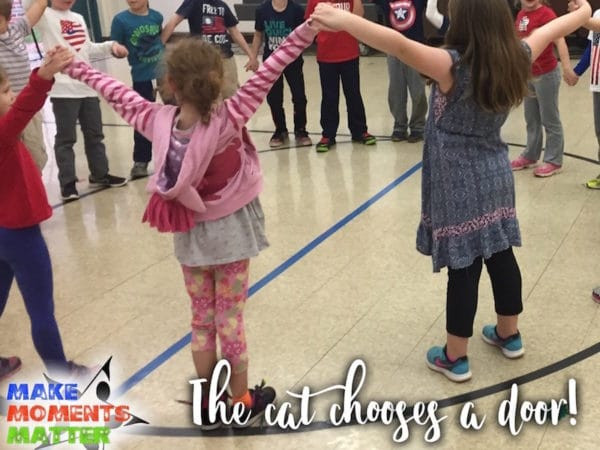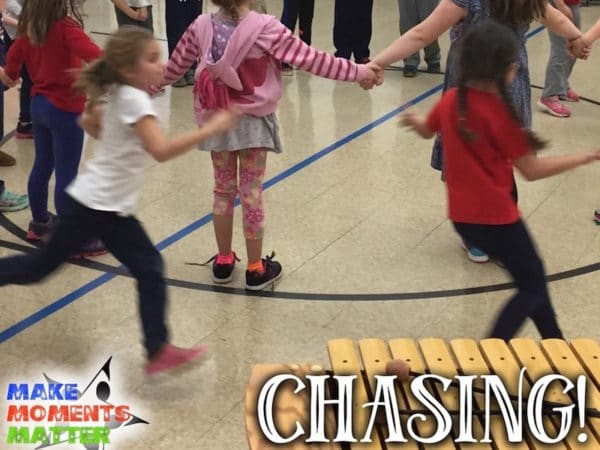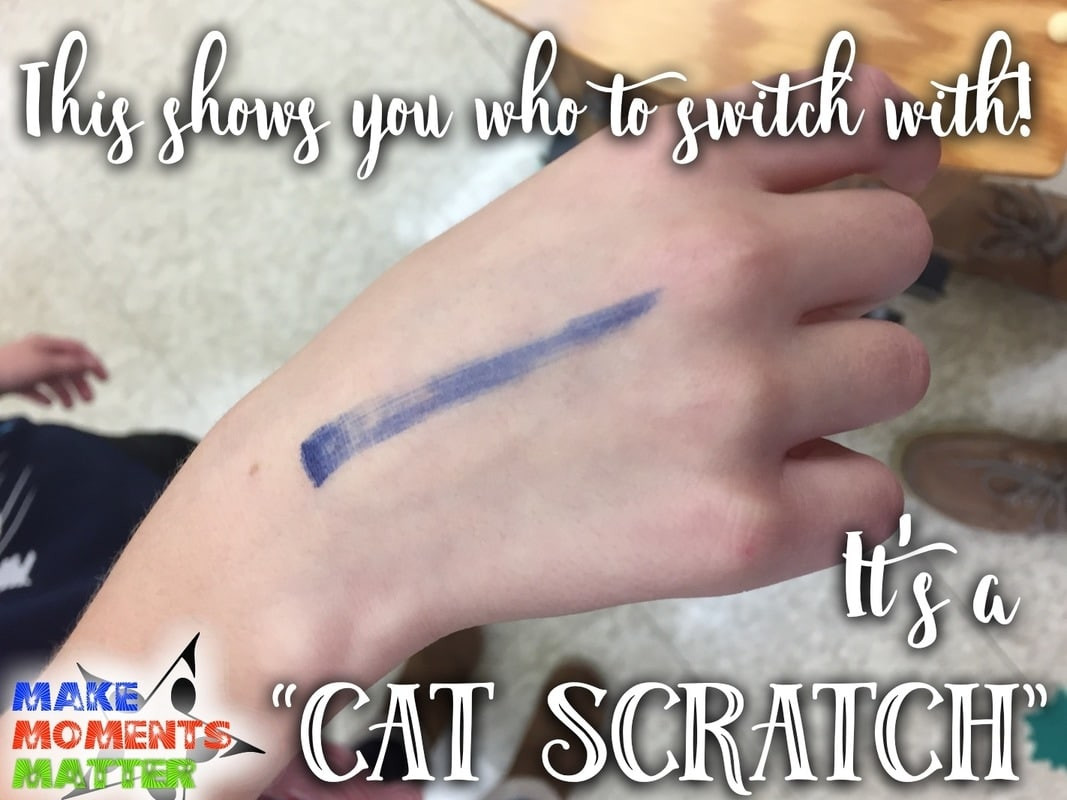One of the most rewarding aspects of teaching music through the Orff Schulwerk approach is how you can take a simple musical idea and develop it into a rich and engaging experience. Starting with just a song, you can layer in movement, introduce ostinatos, incorporate games, and finally bring in instruments. The possibilities are truly endless when you start exploring the potential within a single piece of music.
The song “Naughty Kitty Cat” is a fantastic example of this transformative process. Its catchy melody and fun game make it an excellent entry point for introducing barred percussion instruments to young learners. I recently used this lesson with my youngest students and was thrilled with their engagement and learning. I’m excited to share my step-by-step approach with you. And if you have other creative ways you use this song in your classroom, please share them in the comments below! I’m always looking for new ideas.
Learning the “Cat Cat Cat Song”: A Step-by-Step Process
When I introduce this “Cat Cat Cat Song,” I always begin with my trusty cat puppet. This hilarious, fluffy cat puppet from Folkmanis is a classroom favorite! I gather the children, usually at the end of a lesson, and we have a little chat with the puppet. I tell them about the time my cat got into my lunch bag – a story she vehemently denies, of course! But the evidence was clear: I found her behind my desk, face deep in my lunch bag, with butter all over her whiskers. This little story sets the stage for the song, which I then perform for the children using the puppet.
Here’s the musical notation for the song.
After singing the song through once, the puppet dramatically protests, insisting the story is completely wrong. She meows emphatically, explaining to the kids how she was “FRAMED! Framed, I tell you! It wasn’t me!” – despite the butter evidence. Then, we sing the “cat cat cat song” again, and this time, on each quarter rest in the music, the cat puppet interjects with a loud “meow!” After we finish, I ask the children if they can join in and add their “meows” along with the puppet. They eagerly participate, meowing along with Fluffy as I sing the rest of the song. Often, class time runs out here, and the kids get ready to leave.
In our next lesson, the cat puppet makes a return appearance, and we focus on the children learning the complete “cat cat cat song.” We learn it phrase by phrase, breaking down the melody. In the previous lesson, I sang while they added the “meows.” Now, we switch roles: the students sing the song, and I, with Fluffy the puppet, add in the “meows.” Finally, we combine everything, with the children singing all the phrases of the “cat cat cat song” and incorporating the “meows” at the right moments.
“Chasing the Kitty”: The Circle Game for Our Cat Song
The next exciting step is to transform our “cat cat cat song” into an engaging circle game. We arrange the children in a circle and sing the song again. I start in the middle of the circle with Fluffy the cat puppet, adding the “meows.” Then, I place the puppet on the floor and move to the outside of the circle. I explain to the children that in this game, I’m the frustrated owner, and Fluffy is the naughty cat. I’m trying to catch her! As they sing the “cat cat cat song,” I walk around the outside of the circle. I explain that I can’t get to Fluffy because they are forming a “fence” by holding hands. To get through, I’ll need someone to raise their arms and create a “gate” or doorway.
This is where the real fun begins! I choose one child to be the “cat” and another to be the “owner.” The “cat” stands in the center of the circle, and the “owner” walks around the outside. The rest of the children hold hands tightly, forming the “fence” between the cat and owner. As everyone sings the “cat cat cat song,” the child in the middle gets to be the “cat” and sing the “meows” as a solo. This is a wonderful, low-pressure way to give a child a moment to perform individually for the class. Saying “meow” is much less daunting than singing a full solo or demonstrating a musical concept, making it a great first step towards building confidence in performing alone.
During the song, the “fence” of children works to keep the “owner” away from the “cat.” At the very last “meow” of the “cat cat cat song,” the children raise their arms high, creating “gateways” for the “cat” to escape. The child playing the “cat” then runs out under one of the raised arms. As soon as the “cat” is out, all the other children lower their arms, leaving only one archway open. The “cat” must then run around the outside of the circle and try to get back under that same open arch before the “owner,” who is chasing from the outside, can tag them. The kids absolutely love the thrill of this game!
 Children playing the Naughty Kitty Cat circle game in a music classroom, holding hands in a circle formation.
Children playing the Naughty Kitty Cat circle game in a music classroom, holding hands in a circle formation.
 A different view of children engaged in the Naughty Kitty Cat game, showing the movement and interaction in the circle.
A different view of children engaged in the Naughty Kitty Cat game, showing the movement and interaction in the circle.
For a simpler version of the circle game, you can adapt it to a “duck, duck, goose” style. In this version, the “cat” walks around the outside of the circle as the children sing the “cat cat cat song,” and at the end, the “cat” taps someone on the shoulder. The tapped child becomes the “naughty cat” and chases the original “cat” around the circle to try and tag them. Typically, I dedicate one class period to just playing the game, allowing the children to fully grasp the rules and enjoy the activity without adding extra layers. I often accompany on the xylophone while they sing and play, providing a musical backdrop to the chase. To ensure everyone gets a turn, I usually have the “cat” choose the next “cat” and the “owner” choose the next “owner” after each round.
Adding Instruments: Bass and “Color” to Our Kitty Cat Song
Once the children are comfortable with the “cat cat cat song” and the game, it’s a perfect time to introduce instruments. The first instrumental layer I add is a bass xylophone (BX) accompaniment. I play a simple chord bordun (repeating C and G) on the BX while the children sing the song and play the circle game. This provides a foundational harmonic element to the activity.
Then, to enhance the chase at the end of the game, I either speed up the chord bordun or switch to a “broken bordun,” alternating between C and G notes more rapidly. This faster, more rhythmic accompaniment musically reflects the excitement of the chase, adding another layer of engagement for the children.
 Classroom instruments, specifically glockenspiels set up for students to play during the "meow" parts of the cat song.
Classroom instruments, specifically glockenspiels set up for students to play during the "meow" parts of the cat song.
For the initial introduction of instruments with the “chasing game,” I keep it simple with just the bass xylophone accompaniment. This allows the children to focus on integrating the game and singing without the added complexity of playing instruments themselves. Usually, this first day with the game is enough for them to process. In a subsequent lesson, I bring out glockenspiels and set them up in C pentatonic (removing the F and B bars). I gather the children around the glockenspiels and demonstrate. As we sing the “cat cat cat song,” I play two bars on the glockenspiel every time the word “meow” occurs. I show the children that they can play any two bars they choose within the C pentatonic scale, but they must play only on the “meow” words. This introduces the Orff concept of “color”—adding instrumental timbres to specific moments in a song. Because the instruments are in C pentatonic, any notes the children play will harmonize beautifully with the song.
To transition the children to playing instruments, we return to the circle game. Since they are already familiar with the game roles, they understand that within the circle there’s the “fence,” the “cat,” and the “owner.” After we sing the song and play the game once, I have the previous “cat” choose a new “cat,” and the previous “owner” choose a new “owner.” Then, the children who were just the “cat” and “owner” move over to the glockenspiels. They play on the “meows” while the rest of the circle plays the game again with the newly chosen “cat” and “owner.” This rotation ensures everyone gets a chance to play.
 A teacher using a marker to give a "cat scratch" to a student, indicating their turn to play instruments after the game.
A teacher using a marker to give a "cat scratch" to a student, indicating their turn to play instruments after the game.
If you have two glockenspiels, then the “cat” and “owner” would choose two new children to replace them, and those two would rotate to the instruments. However, to give more children extended time on instruments, I use four glockenspiels. This means figuring out a smooth rotation system so that children don’t play instruments repeatedly while others are stuck in the circle. To make transitions smoother, I introduced a “cat scratch” system. After a child has been the “cat” or “owner,” they come to me to receive a “cat scratch”—a small mark on their hand made with a marker. I use two different colored markers and alternate colors each round. When I “scratch” a child with a red marker, I announce, “Now, go to the instruments and replace someone with a red cat scratch.” When I use blue, I say, “Go replace someone with a blue cat scratch.” By alternating marker colors, each child gets to play the instruments for approximately two rounds of the song before returning to the circle. This ensures more playing time on the instruments and facilitates a more organized rotation.
Further Activities and Extensions for the “Cat Cat Cat Song”
This “cat cat cat song” and game are just the beginning! It’s a fantastic springboard for many other musical explorations. You could delve into the sol-la interval present in the melody and use the song to introduce “la” to your students. For older grades, students could play the chord bordun on the bass xylophone, developing their ensemble skills. You could also notate the melody together as a class using traditional notation or even popsicle sticks for a more hands-on approach.
Connecting music to literature is always enriching. I discovered the book “Bad Kitty” by Nick Bruel this year and it became a fun extension activity after singing and playing the “cat cat cat song.” Reading stories related to the song’s theme adds another layer of engagement and literacy connection.
Furthermore, the song can lead into instrument technique development. The skills learned on the glockenspiels can be transferred to other barred instruments like xylophones and metallophones. For younger children, exploring mallet techniques through games is highly effective. Artie Almeida’s “Mallet Madness” books are a treasure trove of wonderful mallet exploration games, like the “conductor game,” perfect for this age group.
Remember, don’t try to cram all these activities into a single lesson. Children learn best when they have time to absorb and master each step. Introduce the “cat cat cat song” first, let them become comfortable with it, then introduce the game, and finally add instruments. You can revisit the song and game in future lessons as a fun refresher and to explore new instrumental possibilities. With so many avenues to explore, there’s no need to rush!
 Logo for Make Moments Matter – Music Education Podcast, encouraging listeners to explore more music education content.
Logo for Make Moments Matter – Music Education Podcast, encouraging listeners to explore more music education content.
Looking for fresh inspiration for your music lessons? Do you have a commute that could be filled with lesson ideas? Check out my podcast! In each episode, I focus on a new song or game, sharing my teaching process, activity ideas, helpful resources, and more. It’s available on iTunes and other podcast apps. Just search for “Make Moments Matter: A Music Education Podcast” or my name, “David Row,” and join me for musical inspiration on the go! Find the podcast here.

